 W
WThe Spanish missions in California comprise a series of 21 religious outposts or missions established between 1769 and 1833 in what is now the U.S. state of California. Founded by Catholic priests of the Franciscan order to evangelize the Native Americans, the missions led to the creation of the New Spain province of Alta California and were part of the expansion of the Spanish Empire into the most northern and western parts of Spanish North America.
 W
WThe Mexican Secularization Act of 1833 was passed twelve years after Mexico won independence from Spain in 1821. Mexico feared Spain would continue to have influence and power in California because most of the Spanish missions in California remained loyal to the Roman Catholic Church in Spain. As the new Mexican republic matured, calls for the secularization ("disestablishment") of the missions increased. Once fully implemented, the secularization act, called the Decree for the Secularisation of the Missions of the Californias, took away much of the California Mission land and sold it or gave it away in large grants called ranchos.
 W
WThe 1812 San Juan Capistrano earthquake, also known as the Wrightwood earthquake, occurred on December 8 at 15:00 UTC in Alta California. At the time, this was a colonial territory of the Spanish Empire. Damage occurred at several of the missions in the region of Pueblo de Los Ángeles, including Mission San Gabriel Arcángel and Mission San Juan Capistrano, where 40 parishioners were killed during the collapse of a church at an early morning service. Tree ring and paleoseismic evidence show that there is a strong likelihood that the earthquake originated along the Mojave segment of the San Andreas Fault near Wrightwood, but other faults have been suggested as the cause.
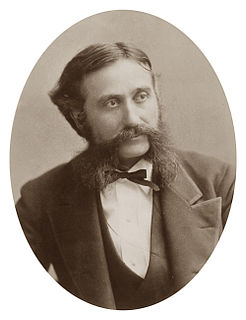 W
WHubert Howe Bancroft was an American historian and ethnologist who wrote, published and collected works concerning the western United States, Texas, California, Alaska, Mexico, Central America and British Columbia.
 W
WFrederick John Behre was an American artist born in San Francisco, California.
 W
WThe California Genocide consisted of actions from the 18th to late 19th century by the Spanish, Mexican and especially United States federal, state, and local governments that resulted in the dramatic decrease of the indigenous population of California. Between 1849 and 1870—following the U.S. occupation of California in 1846—it is conservatively estimated that American colonists murdered some 9,500 California Natives, and acts of enslavement, kidnapping, rape, child separation and displacement were widespread, encouraged, carried out by and tolerated by state authorities and militias.
 W
WThe Convento Building, known for its iconic arched portico or colonnade, was built between 1808 and 1822 and is the only original building remaining at the Mission San Fernando Rey de España in the Mission Hills section of San Fernando Valley in California in the United States. It was also the largest adobe building in California and the largest original building at any of the California missions.
 W
WMission San Francisco de Asís, or Mission Dolores, is the oldest surviving structure in San Francisco and the sixth religious settlement established as part of the California chain of missions. The Mission was founded on October 9, 1776, by Francisco Palóu and Co-founder Fray Pedro Benito Cambón, both members of the de Anza Expedition, which had been charged with bringing Spanish settlers to Alta (upper) California and with evangelizing the local Natives, the Ohlone. Some of the Mission's buildings have been turned into businesses, including a print shop and several saloons.
 W
WEl Camino Real, sometimes associated with Calle Real, usually refers to the 600-mile (965-kilometer) road connecting the 21 Spanish missions in California, along with a number of sub-missions, four presidios, and three pueblos, stretching at its southern end from the San Diego area Mission San Diego de Alcalá, all of the way up to the trail's northern terminus at Mission San Francisco Solano in Sonoma, just north of San Francisco Bay.
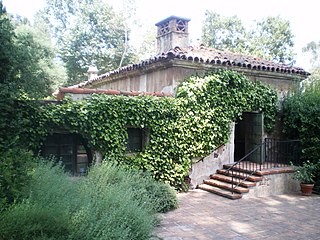 W
WEl Molino Viejo, also known as The Old Mill, is a former grist mill in the San Rafael Hills of present-day San Marino, California, United States, and was built in 1816 by Father José María de Zalvidea from the Mission San Gabriel Arcángel. It is the oldest commercial building in Southern California, and was one of the first ten sites in Los Angeles County to be listed on the National Register of Historic Places, receiving the recognition in 1971. The Old Mill has also been designated as a California Historical Landmark.
 W
WZephyrin Engelhardt, O.F.M., was a German-born Roman Catholic priest and clerical historian of the Franciscan Order.
 W
WHenry Chapman Ford (1828–1894) was an American illustrator. His depictions of California's missions were partially responsible for the revival of interest in the state's Spanish heritage.
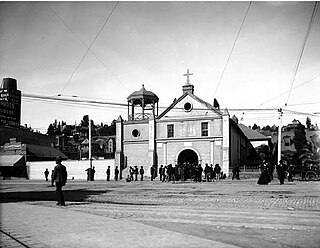 W
WLa Iglesia de Nuestra Señora la Reina de los Ángeles,, is a historic Roman Catholic church in El Pueblo de los Ángeles Historical Monument in northern downtown Los Angeles, California, United States. The church was founded by the Spanish in the early 19th century when modern-day California was under Spanish rule and known as Alta California in the Viceroyalty of New Spain.
 W
WHelen Hunt Jackson was an American poet and writer who became an activist on behalf of improved treatment of Native Americans by the United States government. She described the adverse effects of government actions in her history A Century of Dishonor (1881). Her novel Ramona (1884) dramatized the federal government's mistreatment of Native Americans in Southern California after the Mexican–American War and attracted considerable attention to her cause. Commercially popular, it was estimated to have been reprinted 300 times and most readers liked its romantic and picturesque qualities rather than its political content. The novel was so popular that it attracted many tourists to Southern California who wanted to see places from the book.
 W
WMission La Purísima Concepción, or La Purísima Mission is a Spanish mission in Lompoc, California. It was established on December 8, 1787 by the Franciscan order. The original mission complex south of Lompoc was destroyed by an earthquake in 1812, and the mission was rebuilt at its present site a few miles to the northeast.
 W
WThe Las Flores Estancia was established in 1823 as an estancia ("station"). It was part of the Spanish missions, asistencias, and estancias system in Las Californias—Alta California. Las Flores Estancia was situated approximately halfway between Mission San Luis Rey de Francia and Mission San Juan Capistrano. It is located near Bell Canyon on the Camp Pendleton Marine Corps Base ten miles south of the City of San Clemente in northern San Diego County, California. The estancia is also home to the architecturally significant National Historic Landmark Las Flores Adobe, completed in 1868.
 W
WNuestra Señora Reina de los Ángeles Asistencia was founded in early 1784 in the burgeoning Pueblo de Los Ángeles adjacent to the village of Yaanga as an asistencia to the nearby Mission San Gabriel Arcángel. The assistant mission fell into disuse over time and a Catholic chapel, La Iglesia de Nuestra Señora Reina de los Ángeles, was constructed in its place a mere thirty years later.
 W
WMission Indians are the indigenous peoples of California who lived in Southern California and were forcibly relocated from their traditional dwellings, villages, and homelands to live and work at 15 Franciscan missions in Southern California and the Asistencias and Estancias established between 1796 and 1823 in the Las Californias Province of the Viceroyalty of New Spain.
 W
WMission Puerto de Purísima Concepción was founded near what is now Yuma, Arizona, U.S.A. on the California side of the Colorado River, in October, 1780, by Father Francisco Garcés. The settlement was not part of the California mission chain, but was administered as a part of the Arizona missions. The Mission site and nearby pueblo were inadequately supported, and Spanish colonists seized the best lands, destroyed the Indians' crops, and generally ignored the rights of the local natives. In retaliation the Quechan (Yuma) Indians and their allies attacked and destroyed the installation and the neighboring Mission San Pedro y San Pablo de Bicuñer over a three-day period, from July 17–19, 1781.
 W
WThe Mission Revival style was an architectural movement that began in the late 19th century for a colonial style's revivalism and reinterpretation, which drew inspiration from the late 18th and early 19th century Spanish missions in California. It is sometimes termed California Mission Revival, particularly when used elsewhere, such as in New Mexico where historically there were other Spanish missions that were not the same architecturally.
 W
WThe Mission Vieja or Misión Vieja or the Old Mission was the first Spanish mission in the San Gabriel Valley. Mission Vieja was built in 1771 by what would become the fathers of the Mission San Gabriel Arcángel. The Mission Vieja site was designated a California Historic Landmark (No.161) on Jan. 11, 1935. The location of Mission Vieja is at what is now the South West corner North San Gabriel Blvd and North Lincoln Ave in Montebello, California. The site has a plaque marker and an El Camino Real Bell. Mission Vieja was the first building in the San Gabriel Valley and Los Angeles County. Father Juan Crespí picked the spot for Mission Vieja because water was available at what is now called the Whittier Narrows. The place for Mission Vieja was found in the expedition of Portolá in the summer of 1769. Gaspar de Portolá, Miguel Costansó and Father Juan Crespí recorded the expedition. In 1771 the fathers of Pedro Cambon and the fathers of Angel Somera, with a decree from Governor Pedro Fages, set out to build a mission in the Spanish Empire of Alta California, in what is now called the Los Angeles Basin. The first building was 45 by 18 feet made of adobe and wood. The roof was made with tule reeds from the waters of the Whittier Narrows. The building had around it a weak Palisade fence. Father Angel Somera and Father Pedro Cambon, both Franciscan missionaries, founded Mission Vieja, the original Mission San Gabriel Arcangel, on September 8, 1771; the location is today near the intersection of San Gabriel Boulevard and the Rio Hondo River. The establishment of the mission marked the beginning of the Los Angeles region's settlement by Spaniards and the fourth of twenty-one missions ultimately established along California's El Camino Real. The mission did well initially as a farm and cattle ranch. Six years after its founding, however, a destructive flood in 1776 led the mission fathers to relocate the mission five miles north, to its current location in what is the present day City of San Gabriel.
 W
WMission Nuestra Señora de la Soledad, known colloquially as the Soledad Mission or "Our Lady of Solitude" or Mission Soledad, is a Spanish mission located near the present-day town of Soledad, California. The mission was founded by the Franciscan order on October 9, 1791 to convert the Native Americans living in the area to Catholicism. It was the thirteenth of California's Spanish missions, and is named for Mary, Our Lady of Solitude. The town of Soledad is named for the mission.
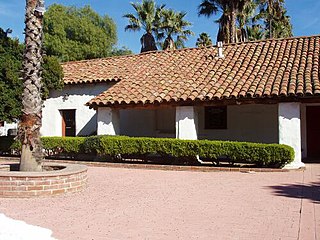 W
WThe San Antonio de Pala Asistencia, or the "Pala Mission", was founded on June 13, 1816 as an asistencia ("sub-mission") to Mission San Luis Rey de Francia, some twenty miles inland upstream from the latter mission on the San Luis Rey River. Pala Mission was part of the Spanish missions, asistencias, and estancias system in Las Californias—Alta California. Today it is located in the Pala Indian Reservation located in northern San Diego County, with the official name of Mission San Antonio de Pala. It is the only historic mission facility still serving a Mission Indian tribe.
 W
WThe Pious Fund of the Californias is a fund, originating in 1697, to sponsor the Roman Catholic Jesuit Spanish missions in Baja California, and Franciscan Spanish missions in Alta California in the Viceroyalty of New Spain from 1769 to 1823, and originally administered by the Jesuits. It became the object of litigation between the US and Mexican governments in the 19th century, with the resolution making legal history in The Hague in 1902.
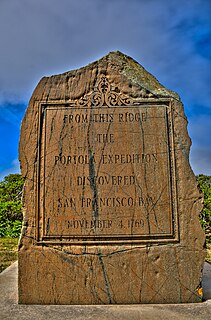 W
WThe Portolá expedition was a Spanish voyage of exploration in 1769–1770 that was the first recorded European land entry and exploration of the interior of the present-day U.S. state of California. It was led by Gaspar de Portolá, governor of Las Californias, the Spanish colonial province that included California, Baja California, and other parts of present-day Mexico and the United States. The expedition led to the founding of Alta California and contributed to the solidification of Spanish territorial claims in the disputed and unexplored regions along the Pacific coast of North America.
 W
WThe Saint Thomas Yuma Indian Mission is a Catholic mission in Winterhaven, California. It was dedicated in 1923, and its design replicates the Mission Puerto de Purísima Concepción, which once stood on the site.
 W
WMission San Antonio de Padua is a Spanish mission established by the Franciscan order in present-day Monterey County, California, near the present-day town of Jolon. It was founded on July 14, 1771, and was the third mission founded in Alta California by Father Presidente Junípero Serra. The mission was the first use of fired tile roofing in Upper California. Today the mission is a parish church of the Diocese of Monterey and is no longer active in the mission work which it was set up to provide.
 W
WThe San Bernardino de Sena Estancia was a ranch outpost of Mission San Gabriel Arcángel in what is now in Redlands, California, United States. It was built to graze cattle, and for Indian Reductions of the Serrano people and Cahuilla people into Mission Indians. Over time, it fell into disrepair, until the early 20th century, when a new, larger structure was built as a museum. The new structure shares the same architectural style, but is not otherwise similar to the original buildings.
 W
WMission Basilica San Buenaventura is a Catholic parish in the Archdiocese of Los Angeles. The parish church in the city of Ventura, California, United States, is a Spanish mission founded by the Order of Friars Minor. Founded on March 31, 1782, it was the ninth Spanish mission established in Alta California and the last to be established by the head of the Franciscan missions in California, Junípero Serra. Designated a California Historical Landmark, the mission is one of many locally designated landmarks in downtown Ventura.
 W
WThe San Buenaventura Mission Aqueduct was a seven-mile long, stone and mortar aqueduct built in the late 18th and/or early 19th century to transport water from the Ventura River to the Mission San Buenaventura in Ventura, California.
 W
WMission San Carlos Borromeo del Río Carmelo, or Misión de San Carlos Borromeo de Carmelo, first built in 1797, is one of the most authentically restored Roman Catholic mission churches in California. Located at the mouth of Carmel Valley, California, it is on the National Register of Historic Places and is a National Historic Landmark.
 W
WMission Basilica San Diego de Alcalá was the first Franciscan mission in The Californias, a province of New Spain. Located in present-day San Diego, California, it was founded on July 16, 1769, by Spanish friar Junípero Serra in an area long inhabited by the Kumeyaay people. The mission and the surrounding area were named for the Catholic Didacus of Alcalá, a Spaniard more commonly known as San Diego. The mission was the site of the first Christian burial in Alta California. The original mission burned in 1775 during an uprising by local natives San Diego is also generally regarded as the site of the region's first public execution, in 1778. Father Luis Jayme, California's first Christian martyr who was among those killed during the 1775 uprising against the mission, lies entombed beneath the chancel floor. The current church, built in the early 19th century, is the fifth to stand on this location. The mission site is a National Historic Landmark.
 W
WMission San Fernando Rey de España is a Spanish mission in the Mission Hills community of Los Angeles, California. The mission was founded on September 8, 1797, and was the seventeenth of the twenty-one Spanish missions established in Alta California. Named for Saint Ferdinand, the mission is the namesake of the nearby city of San Fernando and the San Fernando Valley.
 W
WMission San Francisco de Asís, or Mission Dolores, is the oldest surviving structure in San Francisco and the sixth religious settlement established as part of the California chain of missions. The Mission was founded on October 9, 1776, by Francisco Palóu and Co-founder Fray Pedro Benito Cambón, both members of the de Anza Expedition, which had been charged with bringing Spanish settlers to Alta (upper) California and with evangelizing the local Natives, the Ohlone. Some of the Mission's buildings have been turned into businesses, including a print shop and several saloons.
 W
WMission San Gabriel Arcángel is a Roman Catholic mission and historic landmark in San Gabriel, California. The settlement was founded by Spaniards of the Franciscan order on "The Feast of the Birth of Mary," September 8, 1771, as the fourth of what would become twenty-one Spanish missions in California. San Gabriel Arcángel was named after the Archangel Gabriel and often referred to as the "Godmother of the Pueblo of Los Angeles." The mission was built and run using what has been described as slave labor from nearby Tongva villages, such as Yaanga. When the nearby Pueblo de Los Ángeles was built in 1781, the mission competed with the emerging pueblo for control of Indigenous labor.
 W
WMission San José is a Spanish mission located in the present-day city of Fremont, California. It was founded on June 11, 1797, by the Franciscan order and was the fourteenth Spanish mission established in California. The mission is the namesake of the Mission San José district of Fremont, which was an independent town subsumed into the city when it was incorporated in 1957. The Mission entered a long period of gradual decline after Mexican secularization act of 1833. After suffering decline, neglect and earthquakes most of the mission was in ruins. Restoration efforts in the intervening periods have reconstructed many of the original structures. The old mission church remains in use as a chapel of Saint Joseph Catholic Church, a parish of the Diocese of Oakland. The museum also features a visitor center, museum, and slide show telling the history of the mission.
 W
WMission San Juan Bautista is a Spanish mission in San Juan Bautista, San Benito County, California. Founded on June 24, 1797 by Fermín Lasuén of the Franciscan order, the mission was the fifteenth of the Spanish missions established in present-day California. Named for Saint John the Baptist, the mission is the namesake of the city of San Juan Bautista.
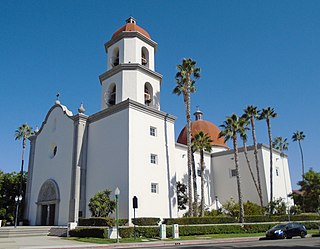 W
WMission Basilica San Juan Capistrano is a Catholic parish in the Diocese of Orange in California. The parish church is located just northwest of Mission San Juan Capistrano in the city of San Juan Capistrano, California, United States. Completed in 1986, it was designated a minor basilica in 2000 and a national shrine in 2003.
 W
WMission San Juan Capistrano is a Spanish mission in San Juan Capistrano, Orange County, California. Founded in 1776 in colonial Las Californias by Spanish Catholic missionaries of the Franciscan Order, it was named for Saint John of Capistrano. The Spanish Colonial Baroque style church was located in the Alta California province of the Viceroyalty of New Spain. The Mission was secularized by the Mexican government in 1833, and returned to the Roman Catholic Church by the American government in 1865. The mission was damaged over the years by a number of natural disasters, but restoration and renovation efforts date from around 1910.
 W
WMission San Luis Obispo de Tolosa is a Spanish mission founded in 1772 by Father Junípero Serra in San Luis Obispo, California. Named after Saint Louis of Anjou, the bishop of Toulouse, the mission is the namesake of San Luis Obispo. Today, it offers tours of the beautiful church, gardens, school and small museum that holds a collection of its artifacts. Unlike other California missions, the San Luis Obispo Mission is open to the public every day of the year and is still a very popular parish for the town's Catholic community.
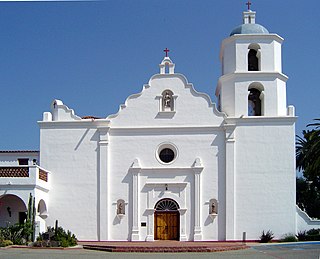 W
WMission San Luis Rey de Francia is a former Spanish mission in San Luis Rey, a neighborhood of Oceanside, California. This Mission lent its name to the Luiseño tribe of Mission Indians.
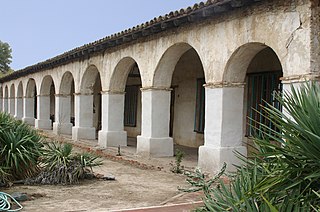 W
WMission San Miguel Arcángel is a Spanish mission in San Miguel, San Luis Obispo County, California. It was established on July 25, 1797 by the Franciscan order, on a site chosen specifically due to the large number of Salinan Indians that inhabited the area, whom the Spanish priests wanted to evangelize.
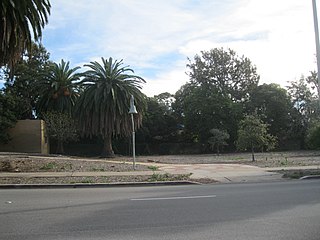 W
WThe San Miguel Chapel Site is an archeological site in Ventura, California, United States, at the location of the first outpost and center of operations that was established while the first Mission San Buenaventura was being constructed. The San Miguel Chapel was located just outside the southwest corner of the walled garden that was constructed as part of the ultimate layout of the mission complex. The open space park is located at southwest corner of the intersection of Thompson Boulevard and Palm Street in downtown Ventura. Interpretative signs and public art have been added to the site that is protected and managed as a natural environment by the city parks department.
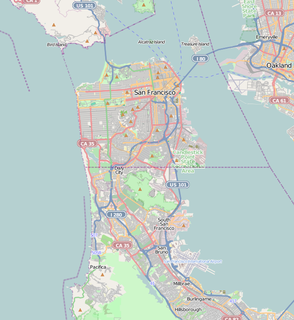 W
WThe San Pedro y San Pablo Asistencia was established in 1786, as a "sub-mission" to Mission San Francisco de Asís in the San Pedro Valley at the Ohlone village of Pruristac. The site is located within the bounds of the Rancho San Pedro in what today is the town of Pacifica.
 W
WMission San Rafael Arcángel is a Spanish mission in San Rafael, California. It was founded in 1817 as a medical asistencia ("sub-mission") of Mission San Francisco de Asís. It was a hospital to treat sick Native Americans, making it Alta California's first sanitarium. The weather was much better than in San Francisco, which helped the ill get better. It was not intended to be a stand-alone mission, but nevertheless grew and prospered and was granted full mission status on October 19, 1822.
 W
WMission Santa Barbara, also known as Santa Barbara Mission, is a Spanish mission in Santa Barbara, California. It was founded by Padre Fermín Lasuén for the Franciscan order on December 4, 1786, the feast day of Saint Barbara, as the tenth mission for the religious conversion of the indigenous local Chumash-Barbareño tribe of Native American people. The mission is the namesake of the city of Santa Barbara as well as of Santa Barbara County.
 W
WMission Santa Clara de Asís is a Spanish mission in the city of Santa Clara, California. The mission, which was the eighth in California, was founded on January 12, 1777 by the Franciscan order. Named for Saint Clare of Assisi, who founded the order of the Poor Clares and was an early companion of St. Francis of Assisi, this was the first California mission to be named in honor of a woman.
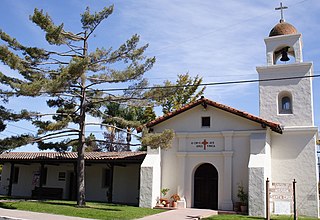 W
WMission Santa Cruz was a Spanish mission founded by the Franciscan order in present-day Santa Cruz, California. The mission was founded in 1791 and named for the feast of the Exaltation of the Cross, adopting the name given to a nearby creek by the missionary priest Juan Crespi, who accompanied the explorer Gaspar de Portolá when he camped on the banks of the San Lorenzo River on October 17, 1769.
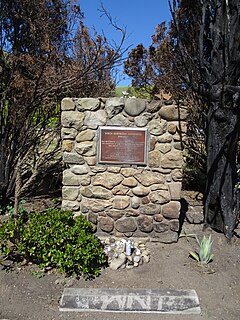 W
WThe Santa Gertrudis Asistencia, also known as the Santa Gertrudis Chapel, was an asistencia ("sub-mission") to the Mission San Buenaventura, part of the system of Spanish missions in Las Californias—Alta California. Built at an unknown date between 1792 and 1809, it was located approximately five miles from the main mission, inland and upstream along the Ventura River. The site was buried in 1968 by the construction of California State Route 33. Prior to the freeway's construction, archaeologists excavated and studied the site. A number of foundation stones were moved and used to create the Santa Gertrudis Asistencia Monument which was designated in 1970 as Ventura County Historic Landmark No. 11.
 W
WMission Santa Inés was a Spanish mission in the present-day city of Solvang, California, and named after St. Agnes of Rome. Founded on September 17, 1804, by Father Estévan Tapís of the Franciscan order, the mission site was chosen as a midway point between Mission Santa Barbara and Mission La Purísima Concepción, and was designed to relieve overcrowding at those two missions and to serve the Indians living north of the Coast Range.
 W
WThe Santa Margarita de Cortona Asistencia was established in 1787 as an asistencia ("sub-mission") to Mission San Luis Obispo de Tolosa, then in the Spanish Las Californias Province. Its site is near the present day city of Santa Margarita, in San Luis Obispo County, central California.
 W
WMission Santa María de los Ángeles was the last of the missions established by the Jesuits in Baja California, Mexico, in 1767. The site chosen was the Cochimí settlement of Cabujakaamung, west of Bahía San Luis Gonzaga near the Gulf of California coast, about 22 kilometers east of Rancho Santa Inés, and south of Cataviña.
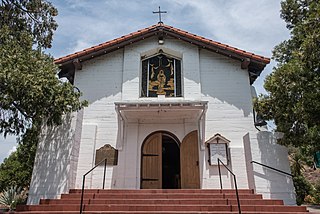 W
WThe Santa Ysabel Asistencia was founded on September 20, 1818 at Cañada de Santa Ysabel in the mountains east of San Diego, as a "sub-mission" to Mission San Diego de Alcalá, and to serve as a rest stop for those travelling between San Diego and Sonora. The native population of approximately 450 neophytes consisted of both Luiseño and Diegueño peoples. Based on historical records, Santa Ysabel enjoyed a higher-than-average conversion rate when compared to the other California missions. Given its remote location, the facility was visited infrequently by the padres after secularization of the missions in the 1830s.
 W
WThe Diego Sepúlveda Adobe is an adobe structure in Costa Mesa, Orange County, California.
 W
WMission San Francisco Solano was the 21st, last, and northernmost mission in Alta California. It was the only mission built in Alta California after Mexico gained independence from Spain. The difficulty of its beginning demonstrates the confusion resulting from that change in governance. The California Governor wanted a robust Mexican presence north of the San Francisco Bay to keep the Russians who had established Fort Ross on the Pacific coast from moving further inland. A young Franciscan friar from Mission San Francisco de Asis wanted to move to a location with a better climate and access to a larger number of potential converts.
 W
WEdward Vischer (1809–1878) was a German-born painter and photographer who migrated from Germany to Mexico at the age of nineteen. There, he worked with the commercial house of Heinrich Virmond, traveling throughout the Pacific Coast region of the Americas. In 1835, he visited Peru on business, where he lived with artist Mauritius Rugendas and met Charles Darwin. In 1842, he became interested in California and agreed to travel there for Virmond.
 W
W W
W